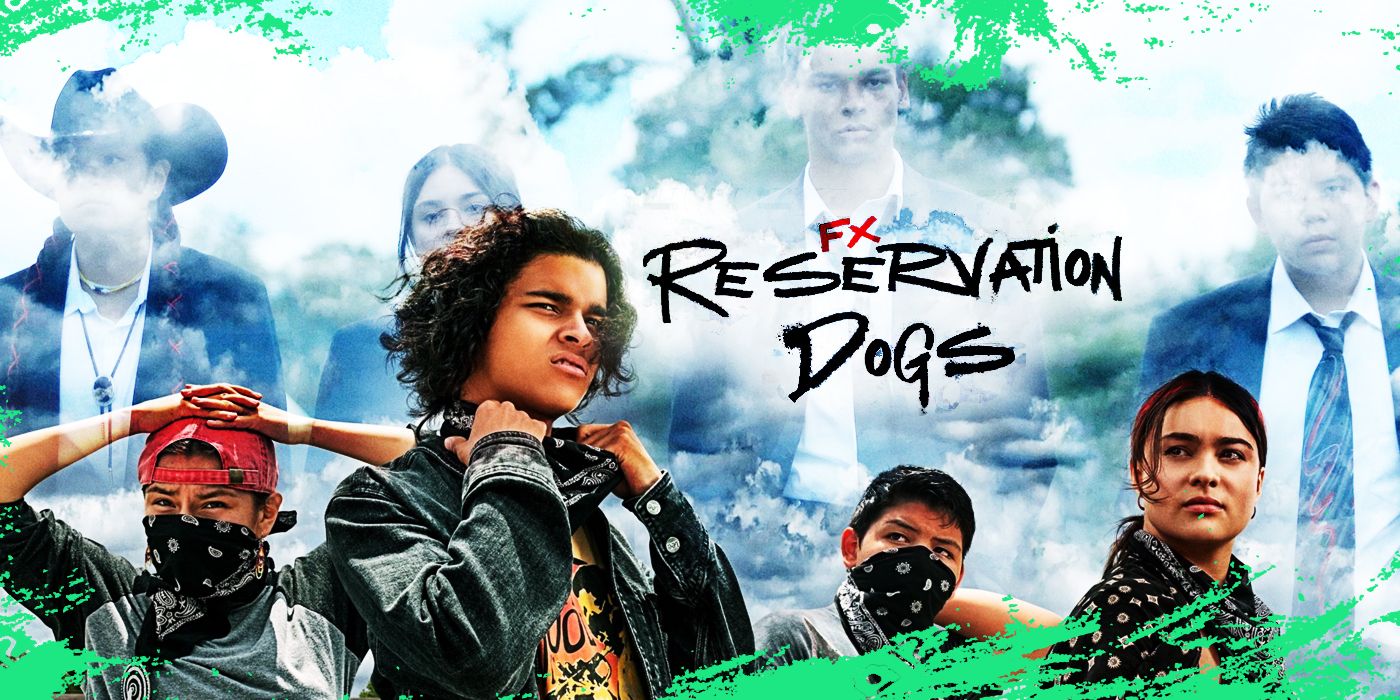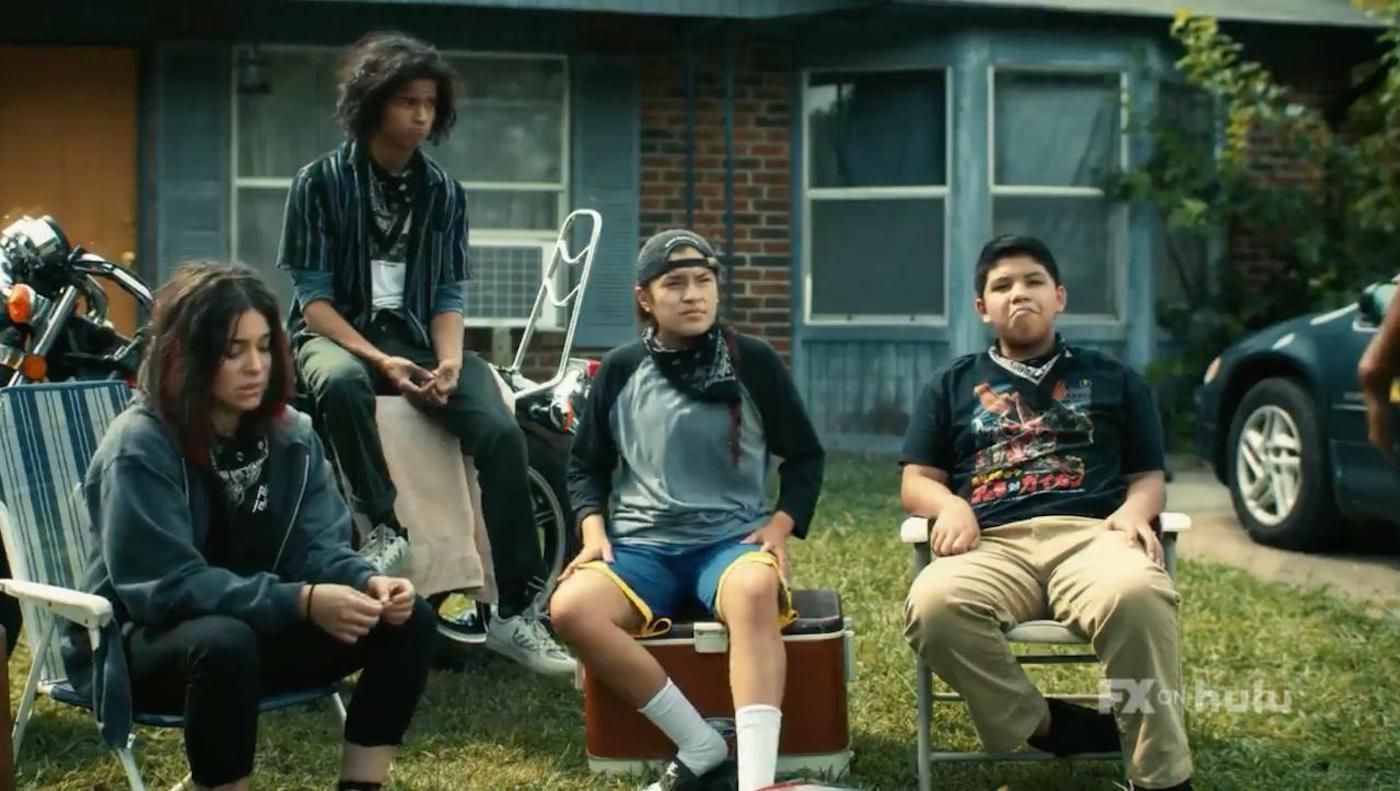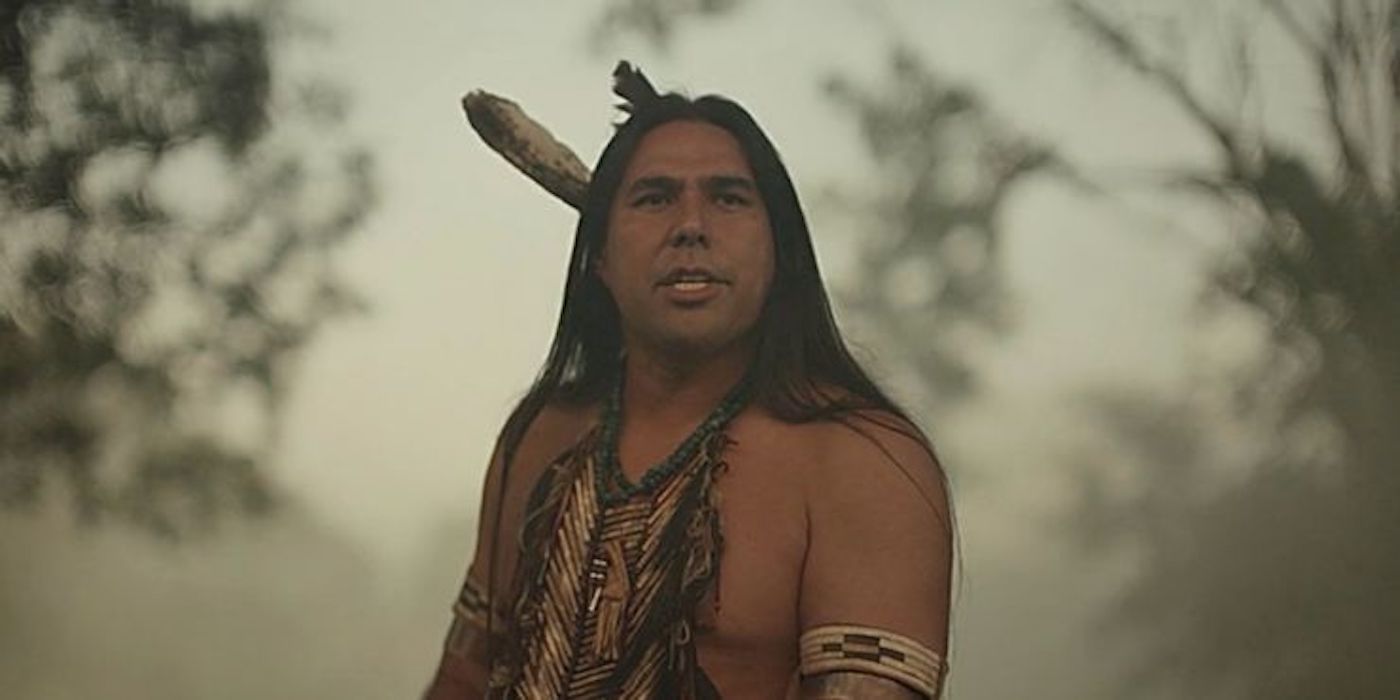No owls are included in the making of Reservation Dogs, a fact that seems strange to note for non-Native viewers. The one appearance of a statue in the likeness of an owl, found in the third episode of the series, crudely blurs the eyes of the creature. Culturally, owls are harbingers of death noted to have eyes made from the nails of spirits, and it's details like this that set Reservation Dogs apart from many of the depictions of Indigenous characters on screen. The care for Native American lore and characters is fully drawn instead of being stereotypes.
Steal, lie, and cheat; the only way to escape a sedated half-life and make it to a place where dreams come true- California. Those are words that the Reservation Dogs (glibly named by an enemy), hitch their every action on. The series takes place at a Native Reservation in Oklahoma and follows four indigenous characters Bear (D’Pharaoh Woon-A-Tai), Elora Danan (Devery Jacobs), Cheese (Lane Factor), and Willie Jack (Paulina Alexis) striving to leave their humble reservation to make it in California while grieving the death of one of their friends. The FX original dark comedy released on Hulu is groundbreaking in its representation of Native voices in front and behind the camera, making it one of the only shows of its kind. This rests a large responsibility on the series to display truthfully what has largely been an ignored or caricatured demographic on screen.
The film and television industries have a history of projecting racist stereotypes on many groups, and Indigenous characters have usually fallen into two camps. One imagines Indigenous people as savages and another imagines them as spirit guides to main characters physically and emotionally lost. The number of films that have found them to be the villains of the narrative is most evident in Westerns of the early 20th century through the 1960s. Following in that stride, contemporary examples of Indigenous representation have relegated these characters to the sidelines or a mystification that finds their traditions to be otherworldly, almost like a guiding force for characters of other cultures to pull. The Simpsons and Futurama utilize this trope to varying degrees, invoking a spirit guide to lead Homer back to his family and the native Martians being aggressive mystical people respectively. The Lone Ranger is among the films in recent years that have delegated Indigenous representation as unimportant as casting Johnny Depp as the character, Tonto. This revival of The Lone Ranger was also concerning in the original series perpetuating racist tropes of their own; a character already problematic in origins and fulfilling many of the tropes of Native Americans (Tonto didn’t speak English and acted as a guide to the Lone Ranger) was bound to insult. In short, Native representation in film and television has been a rocky terrain.
Where does Reservation Dogs land on its representation of the Native American people? The series performs well when it focuses on the perspective that the characters possess by being contemporary members of a Native American reservation village. Rather fittingly, the series takes into account the history of Indigenous characters on screen and subverts those tropes through comedy. Reservation Dogs takes the idea of a spirit guide and pulls back its layers to lampoon the realities of such an occurrence along with its limitations in viewing Native people. Bear, one of the protagonists of the series, meets a guide that sticks with him throughout the first season. This figure communes with Bear on a purgatory-like plain after he and his friends are attacked by a rival gang wielding...paint guns. Striking up a monologue for Bear, Spirit (Dallas Goldtooth) offers words of encouragement that mostly ring hollow and are undercut by his ineptitude. Spirit is a warrior who died at Little Bighorn, and it’s important to note that he didn’t die fighting but was killed by his own horse on the way to the battle, attempts to divulge wisdom to Bear. This scene comes along with the same sort of reverence visually that is to be expected when spiritual events such as these happen for Native characters, but there’s a clear intent to point at the dissonance of those dream sequences with the comedy that not every Native spirit could be a pearl of wisdom touting influential figure.
Spirit follows Bear throughout the first two episodes of the season in moments less and less akin to a reassuring figure and more in line with Bear’s insight into his heritage. There’s a sense that the dream sequences that involve Spirit are representative of Bear and his friend’s desire to leave the reservation, viewing his home as more as a burdened dead-end place where people die. This is further accentuated by the groups' knowledge of their friend Daniel’s (Dalton Cramer) suicide. Reservation Dogs manages to be in conversation with the history of Natives on-screen while commenting on the current feelings of Native adolescents.
Though the series does great work of disposing of harmful tropes directed towards the Native community there are still negative representations of Black culture and people. This is seen in the show's use of African American Vernacular English (AAVE) to hint at a character's inflated ego or lack of awareness. A dream sequence of sorts was even formulated as a rap music video throughout the fourth episode that was associated with Bear’s deadbeat father who comes equipped with cornrows and sagging pants. Along the same lines, the first episode finds the gang of friends confronted with a Black man who drives a truck that the main characters stole. Immediately this scene devolves into a dream sequence that reveals Bear’s perception of this character as an aggressive Black man scolding and threatening violence against him. Reservation Dogs make major strides in Native representation but still perpetrates anti-black sentiments.
This series focuses closely on characters often underrepresented on screen but there must be a better arrangement of the elements of the series that punch down at other oppressed groups. Dream sequences may be used to reveal sentiments, debunk history, and even speak with contemporary or historical ideas by way of visual storytelling. However, these sequences must be challenged by the story to dream of a better representation for all oppressed communities.
New episodes of Reservation Dogs premiere Mondays on FX on Hulu.



